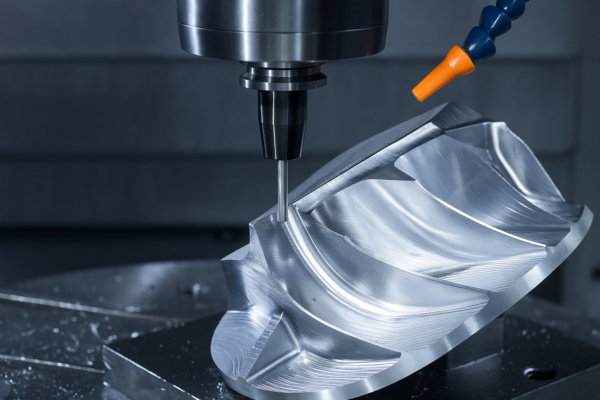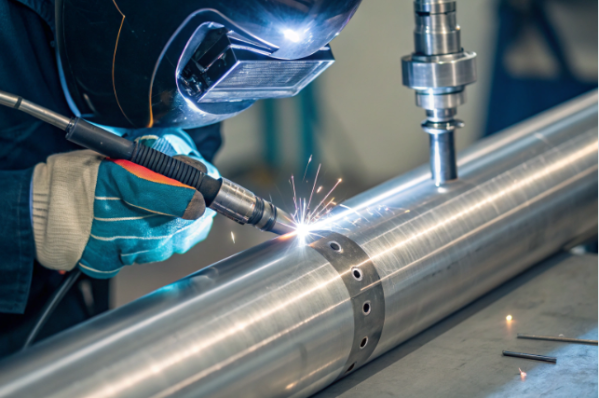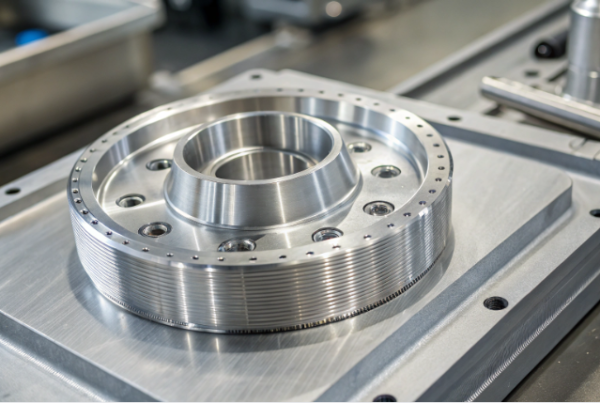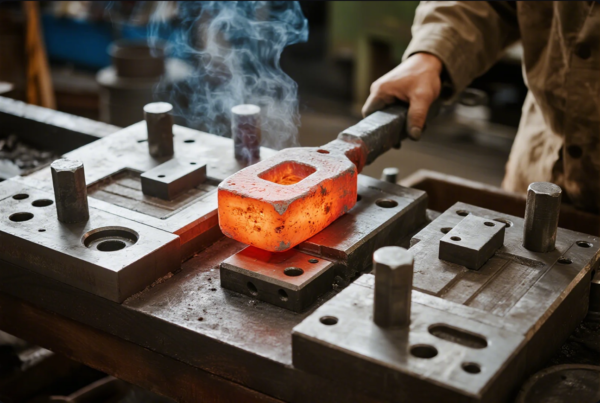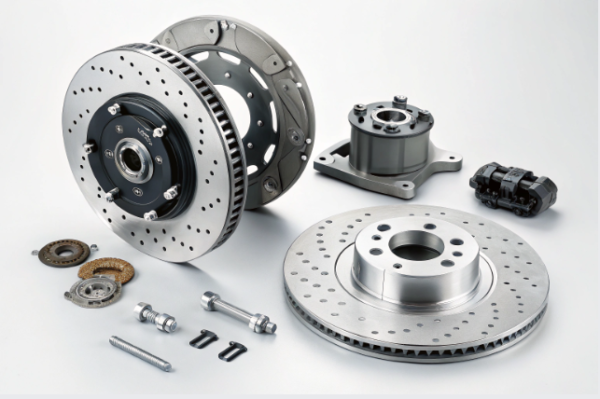What Are the Advantages of Aluminum Set Screws Over Steel and Brass?

The frustration of using heavy, corrosion-prone fasteners can compromise your entire project. Aluminum set screws offer a lightweight, corrosion-resistant alternative that solves these common problems while enhancing electrical conductivity.
Aluminum set screws provide 50% higher conductivity than brass and twice that of steel, while being one-third the weight of brass or copper alloys, making them ideal for electrical applications requiring lightweight, conductive fasteners.
Before dismissing aluminum as "too soft" for your application, consider how these specialized fasteners might be the perfect solution for your specific industry needs.
How Do Aluminum Set Screws Perform in Electrical Applications?
The pain of poor electrical connections can lead to system failures, overheating, and even fire hazards. Aluminum set screws with tin plating create reliable connections that maintain consistent performance even under thermal cycling conditions.
Tin plated aluminum set screws are commonly used in OEM electrical aluminum bodied industrial wire connectors because they provide superior electrical conductivity while expanding and contracting at the same rate as aluminum components.

Dive-Deeper paragraph: When evaluating fasteners for electrical applications, the material properties become critical factors in system performance and safety. Aluminum set screws offer unique advantages that many engineers overlook when defaulting to traditional materials.
Material Conductivity Comparison
The electrical conductivity of fastener materials directly impacts the efficiency of electrical connections. Consider these comparative values:
| — | ||||||||
|---|---|---|---|---|---|---|---|---|
| Aluminum Alloy (2024) | 30-40% IACS | 121-180 | 1.0 | |||||
| Brass (Common) | 28% IACS | 109 | 3.0 | |||||
| Steel (Carbon) | 15% IACS | 43 | 2.9 | |||||
| Stainless Steel | 3-15% IACS | 16 | 2.9 | |||||
| Copper | 100% IACS | 385 | 3.3 |
IACS = International Annealed Copper Standard
Critical Factors in Electrical Applications
When selecting set screws for electrical connections, several factors beyond basic conductivity must be considered:
- Galvanic Compatibility: Aluminum set screws with tin plating create a galvanically compatible connection with aluminum components, preventing corrosion that occurs when dissimilar metals are in contact.
- Thermal Expansion: Aluminum set screws expand and contract at approximately the same rate as aluminum components, maintaining consistent pressure on electrical connections during temperature fluctuations.
- Surface Treatment Effects: The tin plating over copper over zincate treatment on aluminum set screws provides:
- Enhanced surface conductivity
- Corrosion protection
- Reduced thread galling
- Improved torque consistency
For critical electrical applications, the combination of these factors makes aluminum set screws particularly valuable in industrial wire connectors, power distribution equipment, and high-current applications where connection integrity is paramount.
What Makes Aluminum Set Screws Ideal for Lightweight Applications?
The struggle with heavy components in aerospace, automotive, and portable equipment creates unnecessary weight penalties. Aluminum set screws weigh just one-third of their brass or steel counterparts, dramatically reducing overall assembly weight.
Aluminum set screws weigh approximately 2.7 g/cm³ compared to steel\’s 7.85 g/cm³, providing a 65% weight reduction while maintaining adequate strength for many applications, making them ideal for weight-sensitive industries.
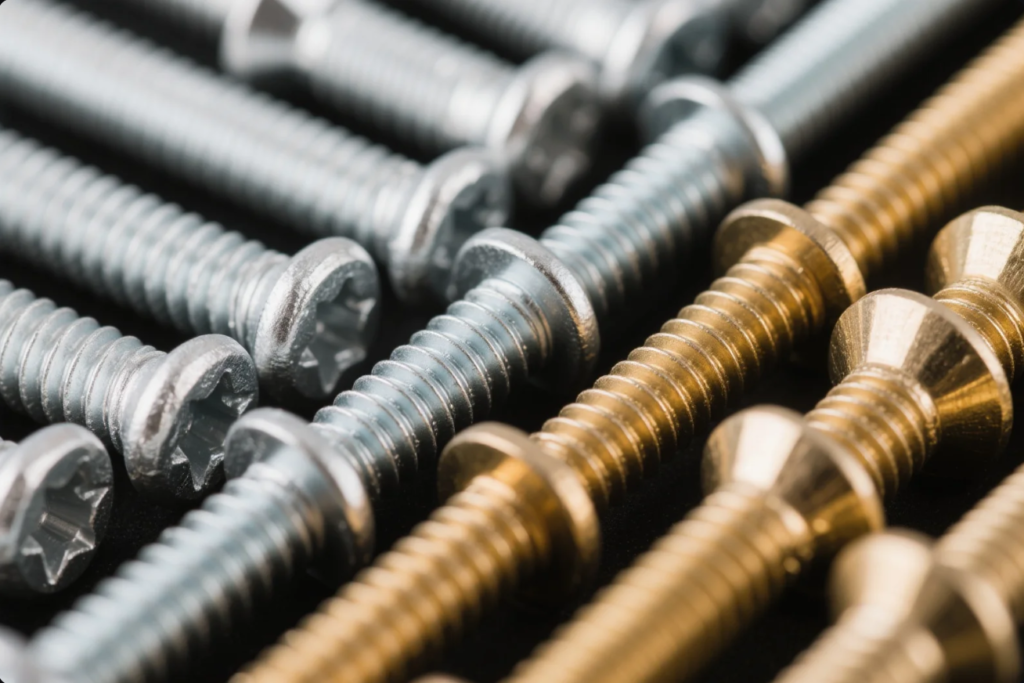
Dive-Deeper paragraph: The weight advantage of aluminum set screws extends beyond the simple material density comparison. When designing weight-critical systems, engineers must consider both the direct and indirect benefits of lightweight fasteners across the entire system architecture.
Weight Savings Analysis
To understand the cumulative impact of switching to aluminum fasteners, consider this comparative analysis for a typical assembly:
| — | ||||||||||||
|---|---|---|---|---|---|---|---|---|---|---|---|---|
| Small Electronics | 24 | 0.12 | 0.04 | 0.08 | 67% | |||||||
| Automotive Panel | 36 | 0.54 | 0.18 | 0.36 | 67% | |||||||
| Aerospace Component | 48 | 0.72 | 0.24 | 0.48 | 67% | |||||||
| Satellite Structure | 120 | 1.80 | 0.60 | 1.20 | 67% |
Secondary Benefits of Weight Reduction
The cascading effects of weight reduction include:
Fuel Efficiency Improvements
In transportation applications, every kilogram matters. The weight savings from aluminum fasteners contribute to:
- Reduced fuel consumption
- Lower emissions
- Extended range
- Improved payload capacity
Handling and Ergonomics
For handheld devices and equipment:
- Reduced operator fatigue
- Improved balance and control
- Enhanced portability
- Lower shipping costs
The aerospace industry has long recognized these benefits, with aluminum fasteners being standard in non-critical structural applications where the strength-to-weight ratio is more important than absolute strength. As one aerospace engineer told me, "We don\’t use steel where aluminum will do the job—every gram counts when you\’re fighting gravity."
How Do Aluminum Set Screws Resist Corrosion in Challenging Environments?
The frustration of dealing with corroded fasteners that seize and become impossible to remove wastes time and resources. Aluminum set screws naturally form a protective oxide layer that prevents further corrosion, even in harsh environments.
Aluminum set screws develop a self-healing oxide film that provides excellent corrosion resistance in many environments, while additional tin plating offers enhanced protection for electrical applications and prevents galvanic corrosion.

Dive-Deeper paragraph: The corrosion resistance of aluminum set screws is a complex subject that deserves careful consideration. While the natural oxide layer provides significant protection, the specific environmental conditions and material treatments dramatically affect long-term performance.
Corrosion Resistance by Environment
Different environments present varying challenges to aluminum fasteners:
| — | ||||||||||
|---|---|---|---|---|---|---|---|---|---|---|
| Indoor/Dry | Excellent | Excellent | Good | Excellent | ||||||
| Outdoor/Humid | Good | Very Good | Fair | Very Good | ||||||
| Marine/Salt Spray | Poor | Fair | Poor | Good | ||||||
| Industrial/Chemical | Poor-Fair* | Fair* | Poor | Good* | ||||||
| High Temperature | Good (to 350°F) | Fair (to 275°F) | Good (to 450°F) | Excellent (to 1400°F) |
*Depends on specific chemicals present
Protective Treatments and Their Effects
The performance of aluminum set screws can be significantly enhanced through various surface treatments:
Anodizing
- Forms hard, durable oxide layer
- Excellent corrosion resistance
- Can be dyed for color coding
- Electrical insulation properties
Tin Plating (over copper over zincate)
- Enhances electrical conductivity
- Provides galvanic compatibility with other metals
- Reduces friction and galling
- Improves torque consistency
Chromate Conversion
- Excellent corrosion resistance
- Good base for paint adhesion
- Electrical conductivity maintained
- RoHS compliance issues with hexavalent chromium
When I consulted with a marine equipment manufacturer about fastener selection, they emphasized that "understanding the specific corrosion mechanisms in your application environment is critical—aluminum isn\’t universally better or worse than other materials, but it has specific advantages in the right conditions."
What Are the Thermal Properties That Make Aluminum Set Screws Special?
The problem of thermal expansion mismatch causes loosening connections and structural integrity issues. Aluminum set screws expand and contract at similar rates to aluminum components, maintaining consistent clamping force through temperature cycles.
Aluminum set screws have a thermal conductivity of 121-180 W/m·K compared to steel\’s 43 W/m·K, allowing them to dissipate heat more effectively while maintaining dimensional stability when used with aluminum components.
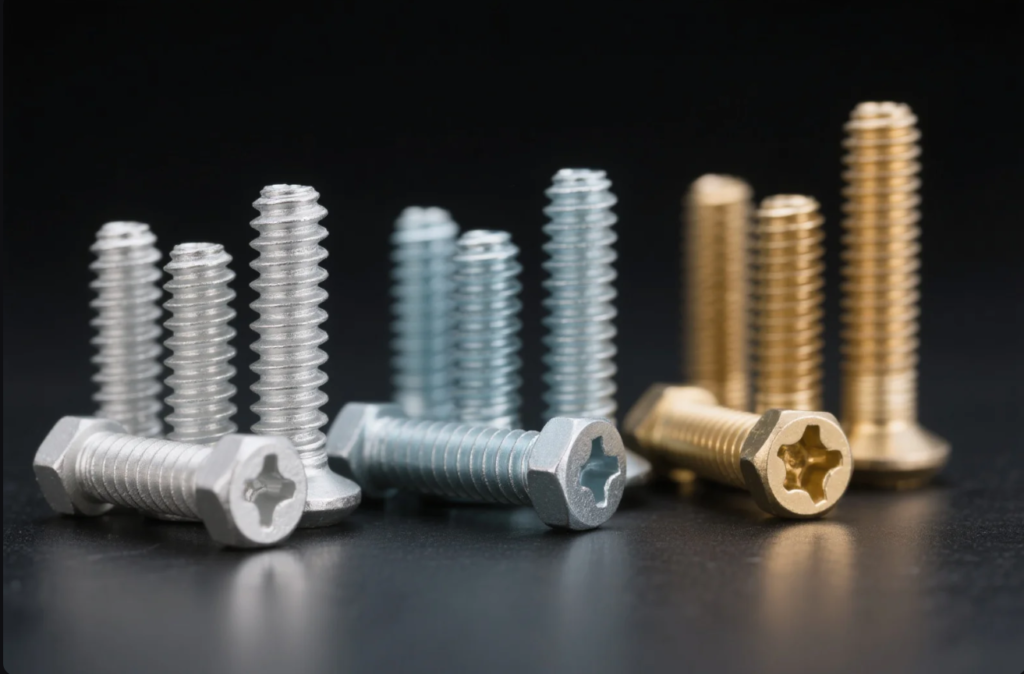
Dive-Deeper paragraph: The thermal behavior of fasteners is often overlooked in system design, yet it can significantly impact long-term reliability, especially in applications with temperature cycling or heat dissipation requirements. Aluminum set screws offer distinct advantages in these scenarios that deserve deeper examination.
Thermal Expansion Compatibility
The coefficient of thermal expansion (CTE) matching between fasteners and components is crucial for maintaining joint integrity:
| — | ||||||
|---|---|---|---|---|---|---|
| Aluminum Alloys | 21-24 | 1.0 | ||||
| Steel (Carbon) | 11-13 | 0.5 | ||||
| Stainless Steel | 16-18 | 0.7 | ||||
| Brass | 18-21 | 0.8 | ||||
| Copper | 16-18 | 0.7 | ||||
| Titanium | 8-9 | 0.4 |
Thermal Cycling Effects on Joint Integrity
When components and fasteners expand and contract at different rates during thermal cycling:
Matched CTE (Aluminum to Aluminum)
- Maintains consistent clamping force
- Reduces stress concentration
- Prevents loosening over time
- Preserves electrical contact resistance
Mismatched CTE (Steel to Aluminum)
- Creates variable clamping force
- Induces stress at thread interfaces
- Promotes gradual loosening
- Degrades electrical connections
Heat Dissipation Capabilities
In applications where heat management is critical, the thermal conductivity of fasteners becomes an important consideration:
Electronic Enclosures
Aluminum set screws can help create thermal pathways that:
- Reduce component operating temperatures
- Improve reliability
- Extend service life
- Enable higher power densities
Power Transmission Equipment
In electrical power applications:
- Better heat dissipation from connection points
- Reduced hotspot formation
- Lower fire risk
- Improved current-carrying capacity
A thermal engineer I worked with on a high-power LED lighting project noted that "the fasteners are part of the thermal management system whether you design them to be or not—aluminum set screws can be leveraged as thermal assets rather than liabilities."
How to Select the Right Aluminum Set Screws for Your Application?
The challenge of navigating countless fastener options leads to decision paralysis or suboptimal choices. A systematic approach to aluminum set screw selection ensures you get the right fastener for your specific application requirements.
Select aluminum set screws based on five key factors: alloy type (2024 for strength, 6061 for corrosion resistance), thread specification (UNC/UNF/metric), point style (cup, flat, oval), drive type (hex socket, slotted), and plating (tin, anodized).
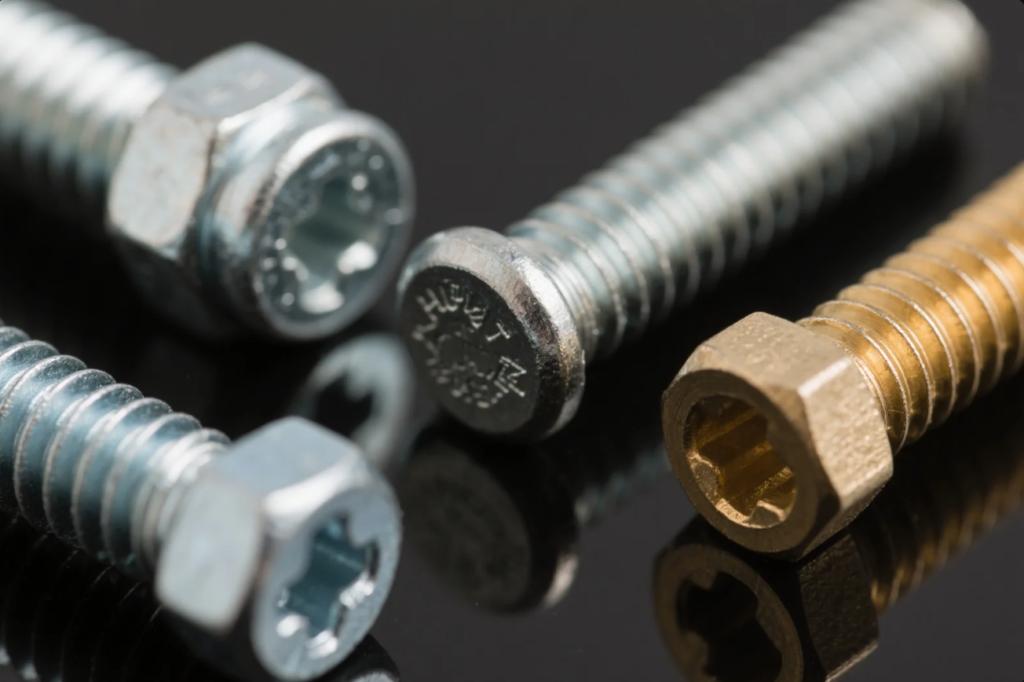
Dive-Deeper paragraph: The selection process for aluminum set screws requires balancing multiple factors to achieve optimal performance. While the basic selection criteria provide a starting point, a more nuanced approach considers application-specific requirements and potential failure modes.
Aluminum Alloy Selection Guide
Different aluminum alloys offer varying property profiles:
| — | ||||||||||
|---|---|---|---|---|---|---|---|---|---|---|
| 2024-T4 | 470 | Moderate | Good | Aircraft fittings, hardware, electrical | ||||||
| 6061-T6 | 310 | Excellent | Excellent | General purpose, corrosive environments | ||||||
| 7075-T6 | 570 | Good | Fair | High-strength applications, aerospace | ||||||
| 5052-H32 | 230 | Excellent | Good | Marine, food processing equipment |
Point Style Selection Criteria
The point style affects how the set screw engages with the mating component:
Cup Point
- Provides maximum holding power
- Creates indentation in shaft
- Difficult to adjust position after setting
- May damage shaft surface
Flat Point
- Distributes pressure evenly
- Minimizes shaft damage
- Good for soft materials
- Less holding power than cup point
Oval Point
- Combines features of cup and flat points
- Moderate holding power
- Reduced shaft damage
- Good for frequent adjustments
Dog Point
- Maximum alignment capability
- Requires pre-drilled hole
- Excellent for precise positioning
- Highest resistance to lateral forces
Drive Type Considerations
The drive type affects installation torque capability and tool accessibility:
Hex Socket
- Higher torque capability
- Recessed drive
- Requires hex key access
- Multiple size standards (inch/metric)
Slotted
- Simple tool requirements
- Limited torque capability
- Susceptible to cam-out
- Easier field servicing
Combination Drives
- Versatile tool options
- Improved torque transfer
- Better for production environments
- Higher manufacturing cost
When consulting with a precision instrument manufacturer about fastener selection, their lead engineer emphasized that "the set screw is often the least expensive component in the assembly, but choosing the wrong one can compromise the function of much more expensive parts—it\’s worth taking the time to select correctly."
Contact Us
📧 Email us: [email protected]🌐 Visit: https://primecustomparts.com
Get a free quote, custom tool configuration, and fast delivery worldwide. Every order comes with setup support.
Conclusion
Aluminum set screws offer superior conductivity, lighter weight, corrosion resistance, and thermal compatibility compared to traditional fasteners, making them ideal for electrical, lightweight, and aluminum component applications.

